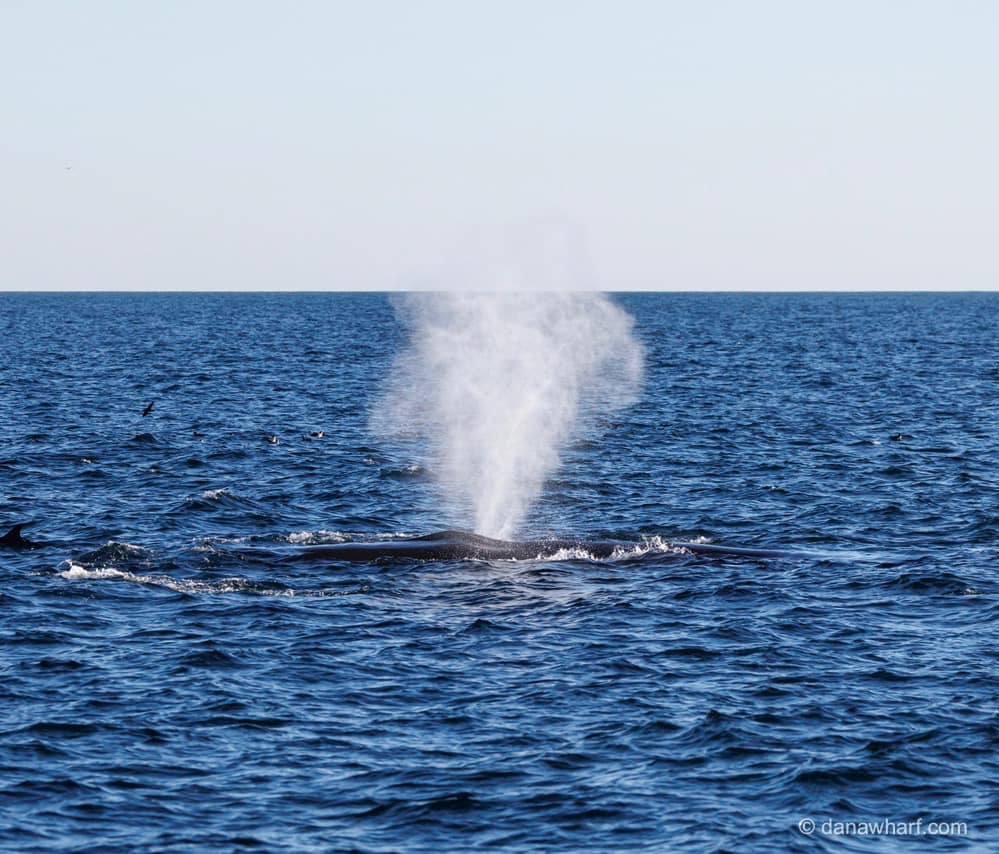What Whales Hear: Exploring Underwater Soundscapes off Dana Point

When we think of whale watching, we usually focus on what we can see — the spouts, the breaches, the tail flukes vanishing into the blue. But beneath the surface, whales are experiencing a completely different world: one made of sound.
At Dana Wharf Whale Watching in Dana Point, we get to observe these incredible animals up close — but what if we could also hear what they hear? In this post, we’ll explore how whales use sound, what the ocean “sounds like” to them, and how this underwater soundscape shapes their lives.
Whales Live in a World of Sound
Unlike humans, whales rely far more on hearing than sight. In the open ocean, where visibility can be limited, sound travels four to five times faster than in air — and much farther. This makes hearing one of the most vital senses for marine mammals.
There are two main types of whales when it comes to sound:
-
Toothed whales (like dolphins and orcas) use echolocation to find prey and navigate. They emit clicks and listen for the echoes bouncing off objects.
-
Baleen whales (like blue whales, fin whales, and gray whales) use low-frequency vocalizations — often called songs or moans — to communicate across vast distances.
Some blue whale calls have been recorded traveling over 1,000 miles underwater.

What Does the Ocean Sound Like?
The underwater world off Dana Point is rarely silent. On a typical day, whales and dolphins are surrounded by:
-
Clicking and chirping dolphins traveling in pods
-
The low rumbles of blue or fin whales in migration
-
Crackling shrimp beds and reef sounds
-
Distant boat engines and ship traffic
-
Wave motion and underwater turbulence
Modern hydrophones (underwater microphones) have made it possible for whale watching boats — including some Dana Wharf trips — to let guests hear these mysterious ocean sounds in real-time.
Sound Is Survival
For whales, hearing is more than just communication — it’s essential for survival. They use sound to:
-
Find food
-
Navigate long migrations
-
Stay connected to their pod or calves
-
Detect danger or unfamiliar activity
Mothers and calves, for example, use soft vocalizations to stay in touch without alerting predators. A blue whale’s deep call might be used to signal location or attract a mate from miles away.
Can We Hear Whales on a Dana Wharf Trip?
Sometimes, yes! On certain Dana Wharf Whale Watching tours, hydrophones are lowered into the water when whales are nearby. Guests may hear the eerie, beautiful calls of whales or the clicks of dolphins passing close to the boat. It adds a whole new layer to the experience — connecting sight and sound in one unforgettable encounter.
Even when we can’t hear them, we know whales are constantly listening. Understanding their world of sound helps us appreciate not just what they do, but how they do it.
Why This Matters
The more we understand about how whales hear and communicate, the better we can protect them. Noise pollution from ships, sonar, and industrial activity can disrupt whale behavior — sometimes even driving them away from feeding or breeding grounds.
As whale watchers, we get to witness these incredible creatures in their natural habitat. But we also become advocates — people who care about preserving not only their home, but their voice.
